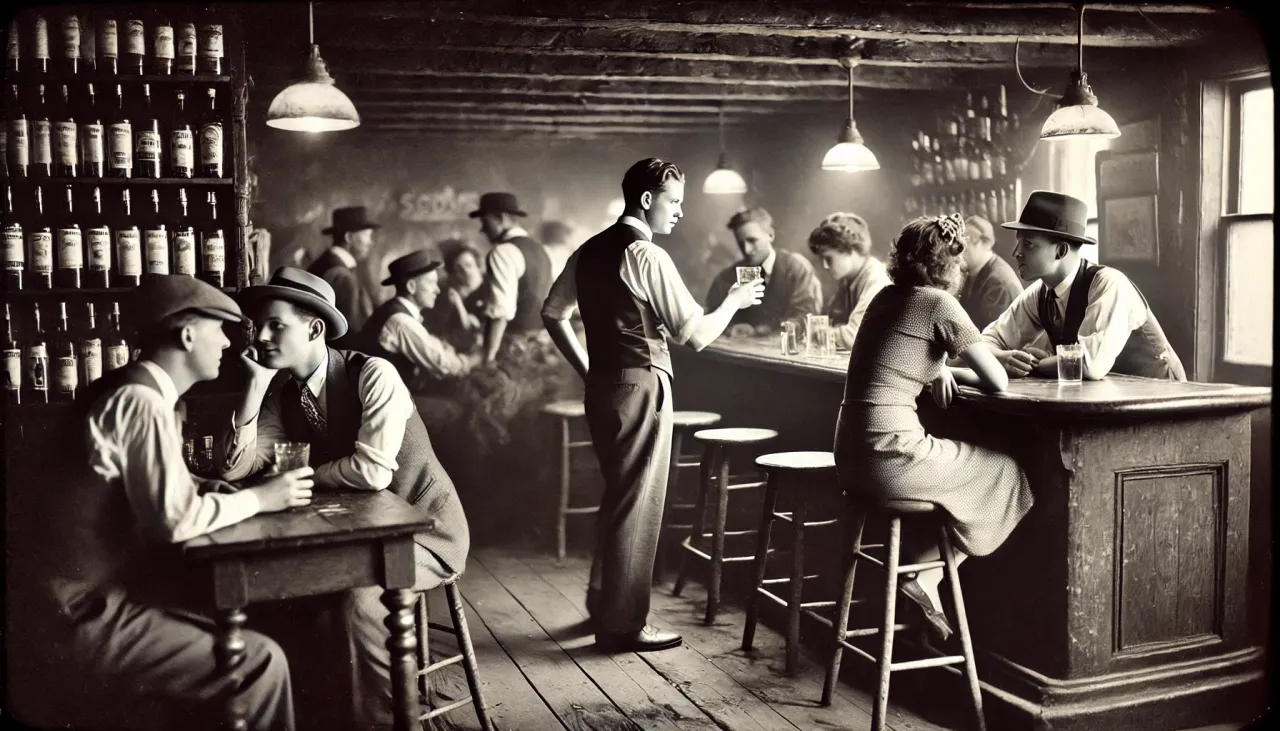The Smoot-Hawley Tariff and Its Influence on Alcohol Consumption

By Dave C & Boozeopedia AI Workflow
See how we write our articles
The Smoot-Hawley Tariff Act of 1930 was a defining piece of legislation during the Great Depression. Designed to protect domestic industries from foreign competition, the policy ultimately worsened economic conditions by provoking global retaliatory tariffs. Among the industries affected, the alcohol sector was particularly impacted—higher tariffs on imported spirits made European and Caribbean liquors prohibitively expensive, reducing their availability and forcing a shift toward domestic and illicit alternatives. This sharp increase in import costs altered the drinking culture in the United States, influencing both legal and underground alcohol production and consumption.
The Economic Consequences for Imported Spirits
Before Smoot-Hawley, American consumers enjoyed access to a diverse range of imported liquors, which played a vital role in shaping cocktail culture:
- French Cognac and Brandy – Frequently used in refined drinks such as the Sidecar.
- Scotch Whisky – A key ingredient in cocktails like the Rob Roy.
- Caribbean Rum – A crucial component of punches and tropical cocktails.
Following the passage of Smoot-Hawley, tariffs on these imports drove prices up significantly. In response, European and Caribbean producers imposed tariffs on American goods, further stalling international trade and deepening the global economic crisis. With foreign liquors now out of reach for most consumers, the American alcohol market was forced to adapt.
The Rise of Domestic and Smuggled Spirits
The decline of imported spirits led to an increase in both domestic production and illicit alcohol trade. Several key trends emerged:
- Expansion of American Whiskey – Bourbon and rye, produced domestically, became the default whiskey choices.
- Proliferation of Canadian Whisky – Smuggling from Canada increased as drinkers sought affordable alternatives to high-priced Scotch. This practice solidified Canadian whisky’s place in the American market. Learn more about Canadian whisky’s influence here.
- Dominance of Gin – Due to its simple production process, gin flourished, leading to the popularity of cocktails such as the Gin Rickey and the Bee’s Knees. Explore more about classic gin cocktails here.
- The Rise of Homemade Spirits & Moonshine – As legal alcohol became less accessible, many Americans turned to home distillation, leading to a surge in moonshine production and the development of creative cocktails designed to mask the harsh flavors of unregulated spirits.
The Impact of Tariffs on Depression-Era Cocktails
With economic constraints reshaping alcohol availability, Depression-era cocktails reflected a mix of ingenuity and frugality. Bartenders and home mixologists relied on lower-cost ingredients and creative techniques to maintain cocktail appeal. For example, fruit juices and syrups were commonly used to mask the harsh flavors of inferior spirits, while homemade tinctures and infusions substituted for expensive imported liqueurs. Egg whites were added to cocktails to create a richer texture without requiring costly ingredients, and soda water was frequently used to stretch the quantity of spirits in mixed drinks.
Notable cocktails of the time included:
- The Whiskey Sour – Leveraging bourbon’s continued availability, this mixture of whiskey, lemon juice, and sugar became a cost-effective favorite.
- The Old-Fashioned – A longstanding cocktail requiring minimal ingredients, it remained a staple among whiskey drinkers. Discover the essentials for making this classic drink here.
- The Bee’s Knees – A gin-based cocktail that used honey and lemon to counteract the strong taste of lower-quality, mass-produced spirits.
- The Mary Pickford – Traditionally crafted with rum, this cocktail was adapted using alternative domestic spirits.
Long-Term Effects of the Smoot-Hawley Tariff on Alcohol Consumption
The Smoot-Hawley Tariff had lasting effects on American drinking habits, extending beyond the Great Depression. By making imported alcohol unaffordable, it encouraged domestic production and innovation in mixology and spirit manufacturing. Additionally, the reliance on locally available liquor cemented Canadian whisky as a staple in American drinking culture.
The economic failures of Smoot-Hawley serve as an enduring example of the unintended consequences of protectionist policies. Its impact is still referenced in modern trade debates, particularly in discussions surrounding tariffs on alcohol and luxury goods. The lessons from this period continue to influence policymakers weighing the costs and benefits of economic isolationism.
Despite economic hardship, the era also underscored the resilience of cocktail culture. Even in times of scarcity, consumers and bartenders found ways to adapt, innovating with available ingredients and shaping a new wave of mixological creativity—an enduring testament to the ability to preserve and refine cultural traditions in the face of adversity.